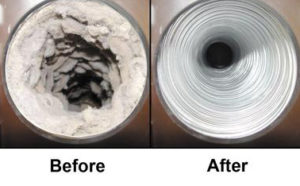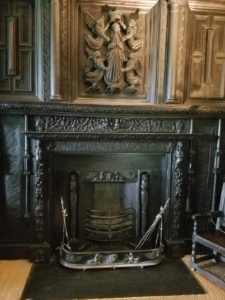What You Need To Know About Chimney Liners
 There are different types of chimney liners in Stockton, Ca area. You may have a metal, ceramic or clay conduit installed in your chimney. It doesn’t really matter. The purpose of a chimney liner is protect the walls of your chimney from corrosion and heat and also to control combustion by products so that they escape into the atmosphere.
There are different types of chimney liners in Stockton, Ca area. You may have a metal, ceramic or clay conduit installed in your chimney. It doesn’t really matter. The purpose of a chimney liner is protect the walls of your chimney from corrosion and heat and also to control combustion by products so that they escape into the atmosphere.
These days most states have laws mandating the installation of chimney liners. A chimney without a liner is a potential fire hazard. In the past the National Bureau of Standards (NBS) conducted a number of tests on masonry chimneys.
They looked for signs of durability and safety and concluded that chimneys that didn’t have liners were very unsafe. So laws were changed and now you must have a chimney liner Turlock.
What do Chimney Liners do?
There are three main reasons why you must have a chimney liner:
-
Protection against Chimney Fires
The NBS found in their many tests that if a chimney didn’t have a liner then the heat from a fire would travel up the chimney so fast that any adjacent woodwork would ignite in around 3.5 hours. So a chimney liner protects your home from the rapid transfer of heat to combustible materials.
-
Protect the Chimney Masonry
In other NBS tests they discovered that without a chimney liner the gases in the chimney flue would penetrate the masonry. When these gases penetrate mortar and bricks the structure weakens and the useful life of the chimney reduces.
The reason for this is that the gases in the flue are acidic. This means that they just eat away at the bricks and mortar in the structure of your chimney. When mortar joints deteriorate there will be a faster heat transfer to adjacent combustibles and this leads to carbon monoxide and other dangerous gases leaking into your home.
-
Appliance Efficiency
If you have an oil or gas furnace or a modern wood stove then it is essential that you have the correct size of flue for these appliances to function efficiently. Your chimney provides air flow so that appliances can work properly and they provide a safe escape for the combustibles outside of your home.
If you have an incorrectly sized chimney liner then you are very likely to experience a buildup of creosote with a wood burning stove which can cause chimney fires. The wrong sized chimney flue with oil and gas appliances can lead to the production of too much carbon monoxide.
The Different Types of Chimney Liners
There are three main types of chimney liners:
-
Clay Tiles
These are the most common type of chimney liners in use today. They are the least expensive of the three types and perform pretty well for well maintained open fireplaces. The problem with clay tiles is that they are unable to quickly absorb and distribute heat evenly if there is a chimney fire.
-
Metal
Metal chimney liners are usually aluminum or stainless steel. These are used a lot for repairs and upgrades. Metal chimney liners are durable and safe and will work with all kinds of appliances. The biggest problem is that they cost a great deal more than clay tiles.
-
Cast
These are cement like chimney liners which form a smooth, insulated and seamless escape route for flue gases when installed properly. A cast chimney liner will work with all fuel types and can improve the structure of older chimneys. The installation of cast chimney liners is difficult and usually the costs are high.
 At McDonald Chimney Services we have been providing chimney liner services in Stockton, Ca for 30 years. We have experienced chimney technicians that can provide the right chimney liner for your needs. Go here to find out more.
At McDonald Chimney Services we have been providing chimney liner services in Stockton, Ca for 30 years. We have experienced chimney technicians that can provide the right chimney liner for your needs. Go here to find out more.
